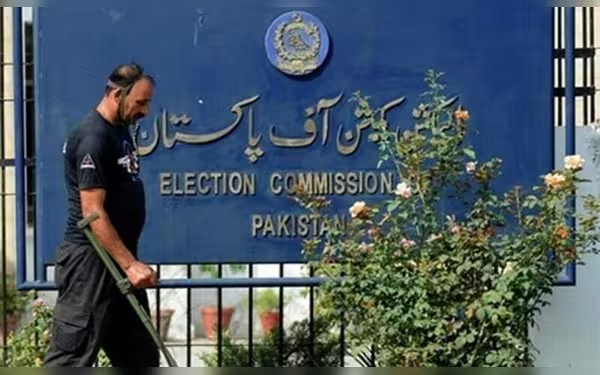Saturday, November 16, 2024 05:47 PM
Gender Gap in Voter Enrolment Narrows in Pakistan
- Significant reduction in gender gap in voter enrolment.
- ECP initiatives empower women to register and vote.
- Societal attitudes shifting towards women's political participation.
 Image Credits: dawn.com
Image Credits: dawn.comRecent data shows a significant reduction in the gender gap in voter enrolment in Pakistan, highlighting the need for continued efforts.
The issue of voter enrolment in Pakistan has long been a topic of concern, particularly regarding the gender gap that exists in the electoral process. Historically, women have faced numerous barriers that have hindered their participation in voting. However, recent data from the Election Commission of Pakistan (ECP) indicates a significant shift in this trend, as the gender gap in voter enrolment appears to be narrowing.
A thorough comparative analysis of the latest voters’ data reveals that, as of November 2021, there were 28 districts in Khyber Pakhtunkhwa with notable disparities between male and female voters. This was followed by 26 districts in Balochistan, 17 in Punjab, and nine in Sindh. Alarmingly, 32 districts across the country still exhibit substantial gaps in voter enrolment, with 20 of these districts located in Punjab, seven in Sindh, four in Khyber Pakhtunkhwa, and one in Balochistan.
The statistics highlight a pressing need for targeted efforts to address these gaps. The ECP has been working diligently to encourage female voter registration through various initiatives, including awareness campaigns and community outreach programs. These efforts are crucial in empowering women and ensuring their voices are heard in the democratic process.
Moreover, the reduction in the gender gap is not just a matter of numbers; it represents a shift in societal attitudes towards women's participation in politics. As more women register to vote, it is likely that their concerns and issues will gain greater visibility in political discourse. This change is essential for fostering a more inclusive democracy where all citizens, regardless of gender, have an equal opportunity to influence the decision-making processes that affect their lives.
While the data shows a positive trend in reducing the gender gap in voter enrolment, there is still much work to be done. Continuous efforts from the government, civil society, and communities are necessary to ensure that every eligible voter, especially women, can exercise their right to vote. As we move forward, it is imperative to keep the momentum going and strive for a future where gender equality in voting is not just an aspiration but a reality.













